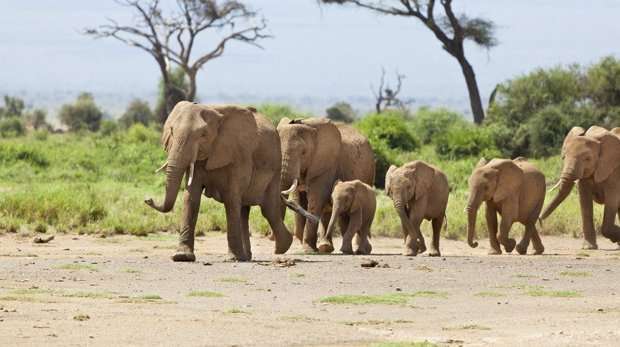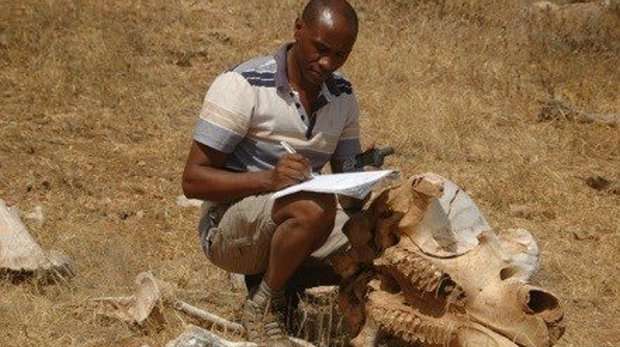Reduce elephant poaching through communal land ownership

Local communities should be more in the lead in forming wildlife conservancies in order to reduce elephant poaching in Northern Kenya. Researchers of the ITC Faculty for Geo-Information Science and Earth Observation at the University of Twente concluded that after a study conducted with Save the Elephants, Kenya Wildlife Service, Colorado State University and the Northern Rangelands Trust. Establishment of community wildlife conservancies is the best solution for reducing elephant poaching in Northern Kenya, says their study recently published in scientific journal PLoS ONE.
Record high
Between 2011 and 2014, the poaching of African elephants reached the highest level ever recorded. In just three years' time, around 100,000 elephants were brutally killed for their ivory. Where land is under multiple uses and ownership, determining the local poaching dynamics is important for identifying successful conservation models. Using elephant mortality records collected from 2002 to 2012 and the results of aerial total counts of elephants for the Laikipia-Samburu ecosystem of northern Kenya, Festus Ihwagi - a PhD candidate at the ITC Faculty - sought to determine the influence of land ownership and use on diurnal elephant distribution and on poaching levels.
Importance of land ownership
He found that land outside the protected areas (park system) is pivotal for elephant conservation in the Laikipia-Samburu ecosystem because it accounts for 98.5 per cent of the elephant range. The land under private ranching and community conservation had the highest densities of elephants, indicating their importance for elephant conservation in the ecosystem. "Significantly higher densities of elephants in the community conservancies than in the community pastoral areas indicate the success of this model of conservation: management of wildlife alongside communal grazing", says Ihwagi.
"Despite lower densities of live elephants and higher ratios of illegally killed carcasses, the unprotected community pastoral land is important for connecting the formally protected areas and the wildlife friendly private ranches and conservancies in the greater ecosystem." says Dr. Tiejun Wang, Ihwagi's supervisor. "Our work highlights the relationship between illegal killing and various land ownership and use models, which can help focus anti-poaching activities."
"Encouraging and promoting land owners to adopt land use types that recognize the importance of protecting wildlife would substantially reduce poaching levels." says Prof. Andrew Skidmore, Ihwagi's PhD promotor. He adds that the community involvement would create further understanding among pastoral communities that wildlife is a key draw in attracting tourists.

More information: Festus W. Ihwagi et al. Using Poaching Levels and Elephant Distribution to Assess the Conservation Efficacy of Private, Communal and Government Land in Northern Kenya, PLOS ONE (2015). DOI: 10.1371/journal.pone.0139079
Journal information: PLoS ONE
Provided by University of Twente


















